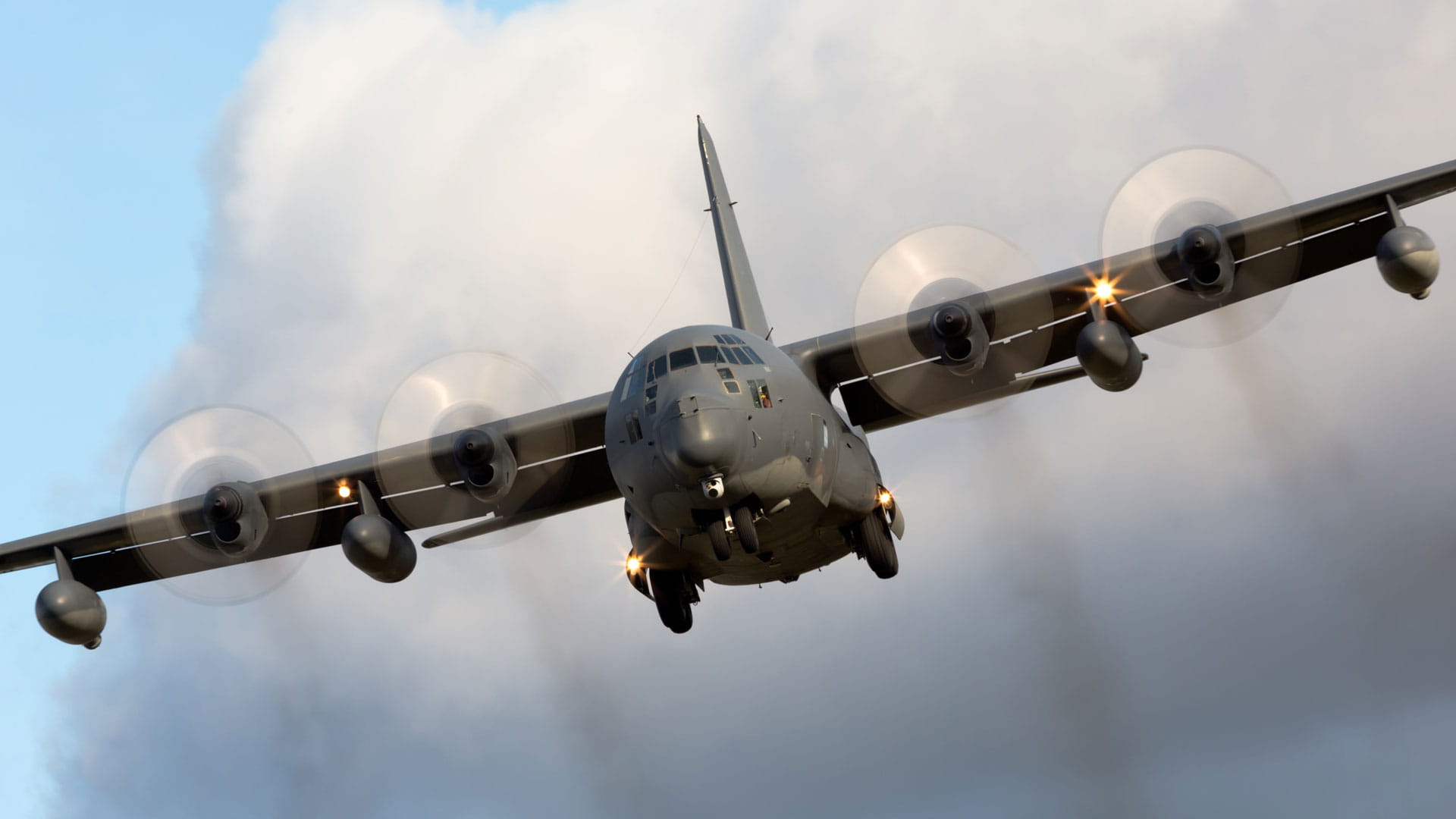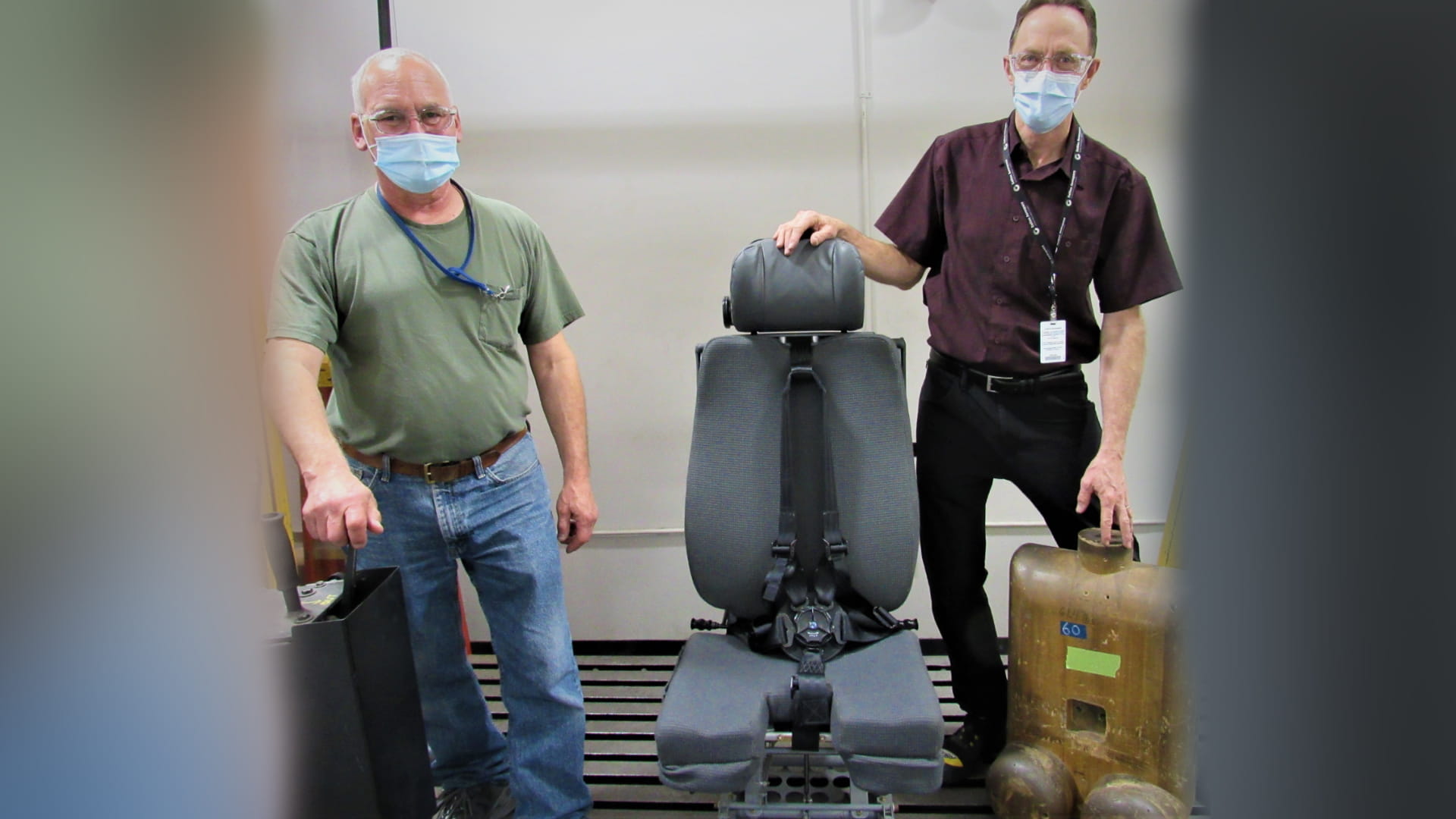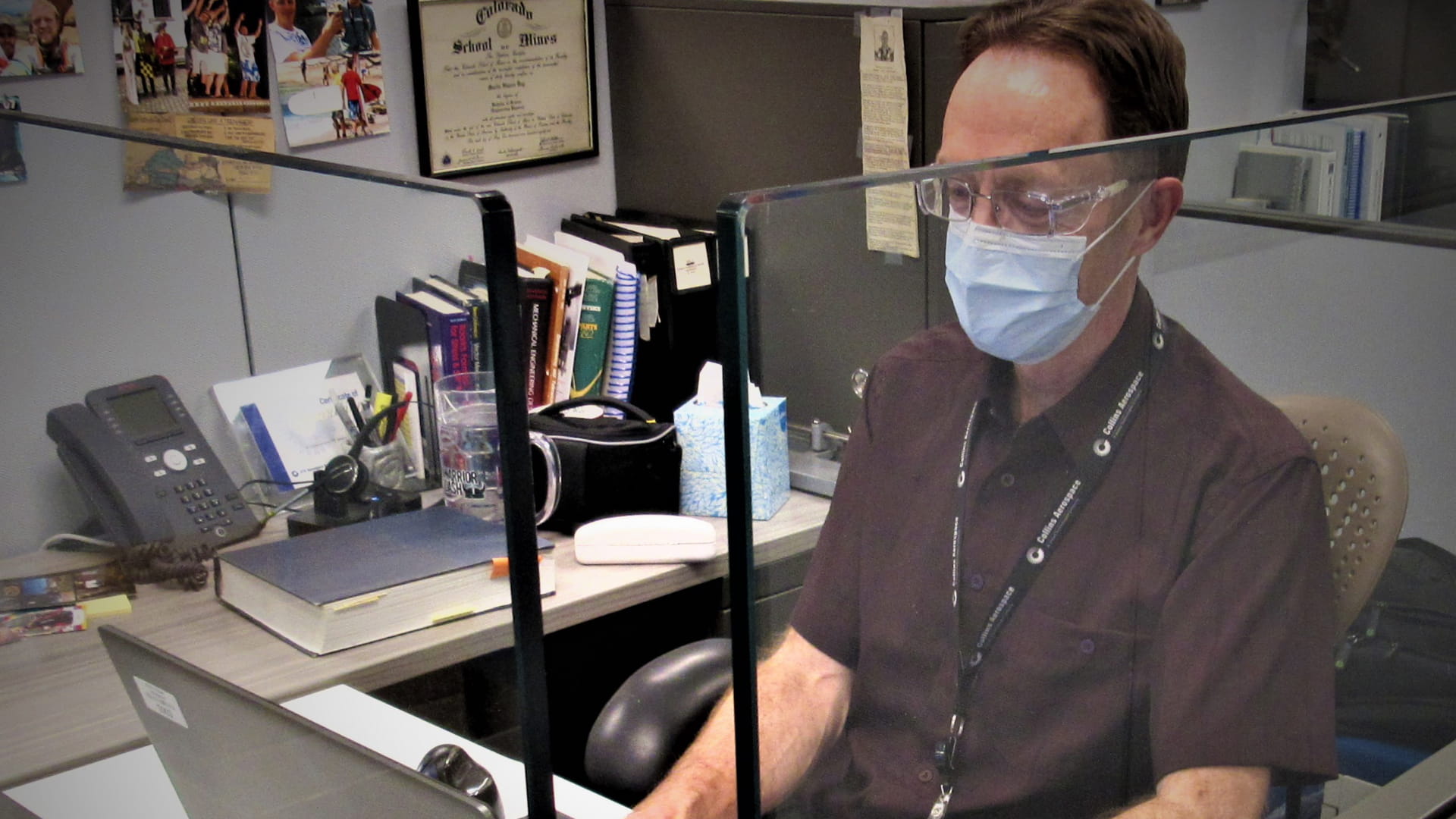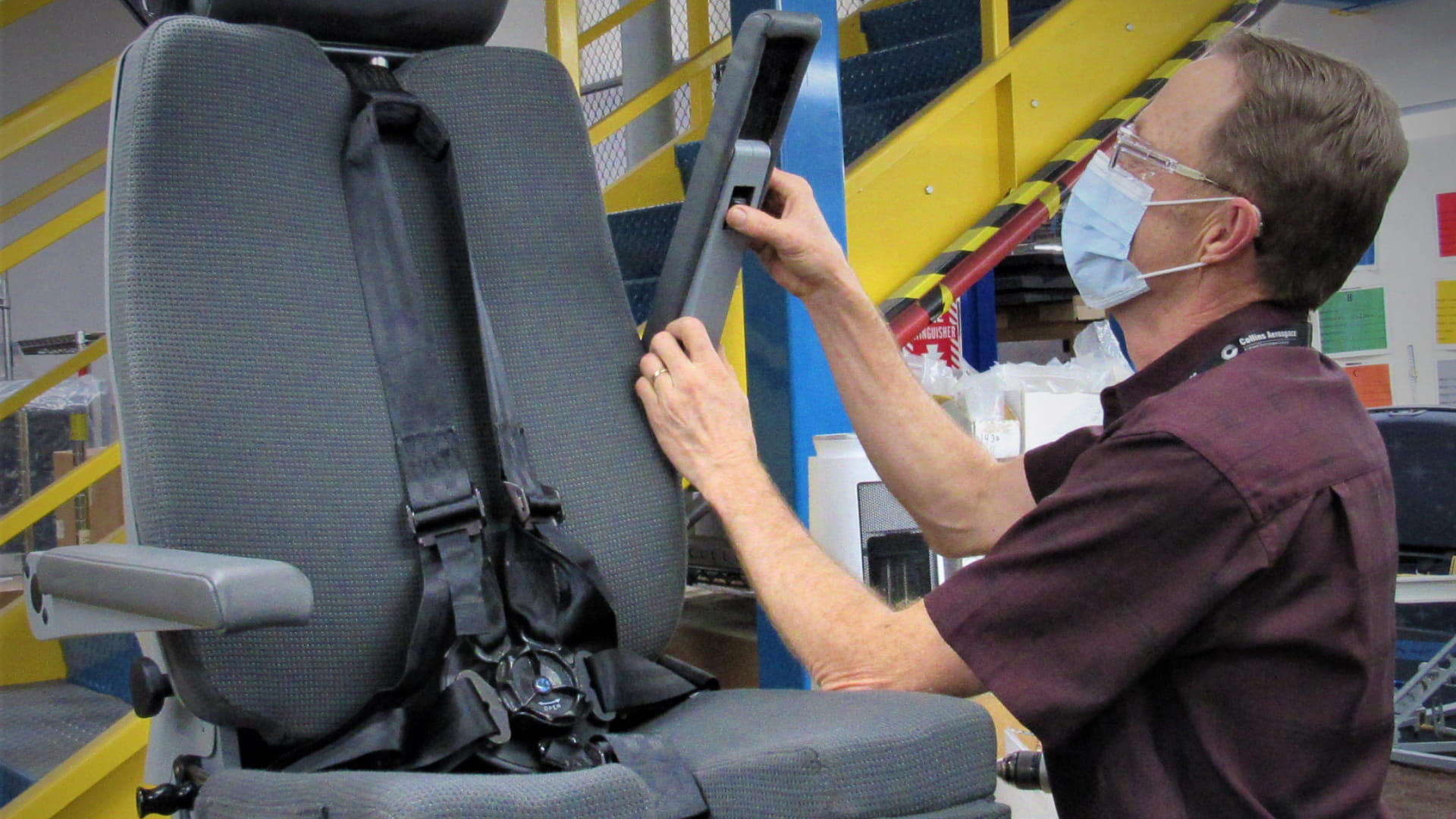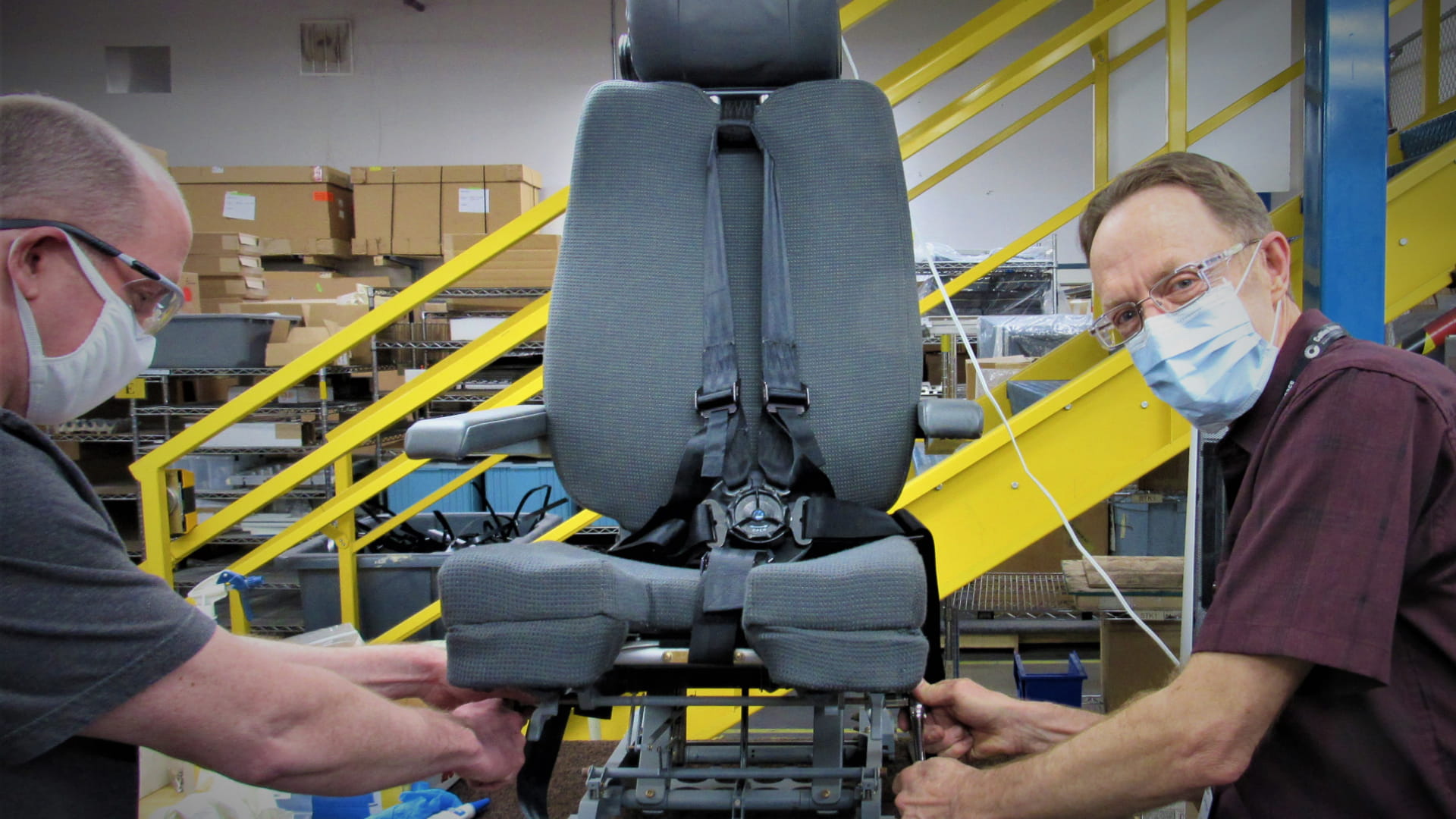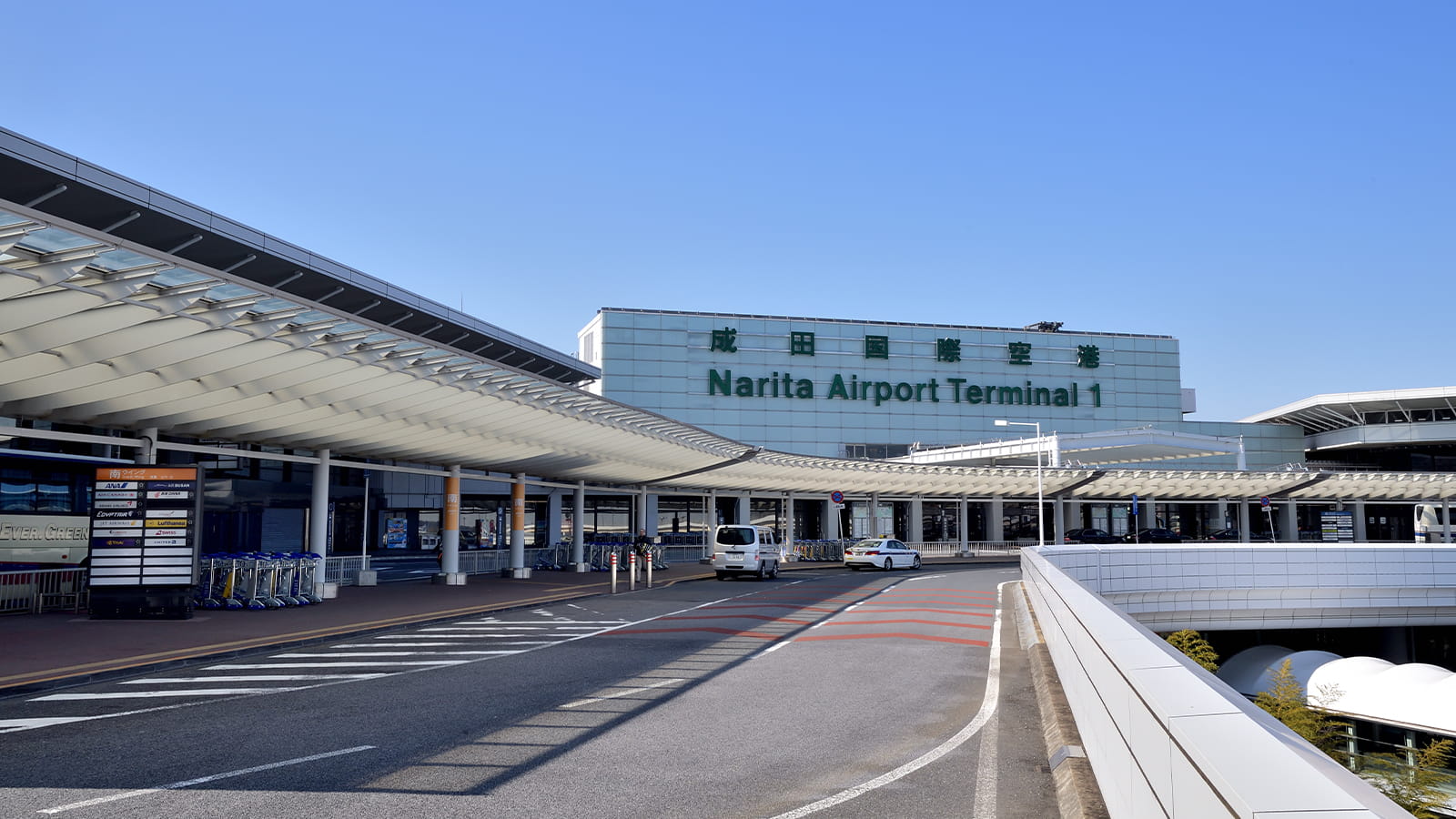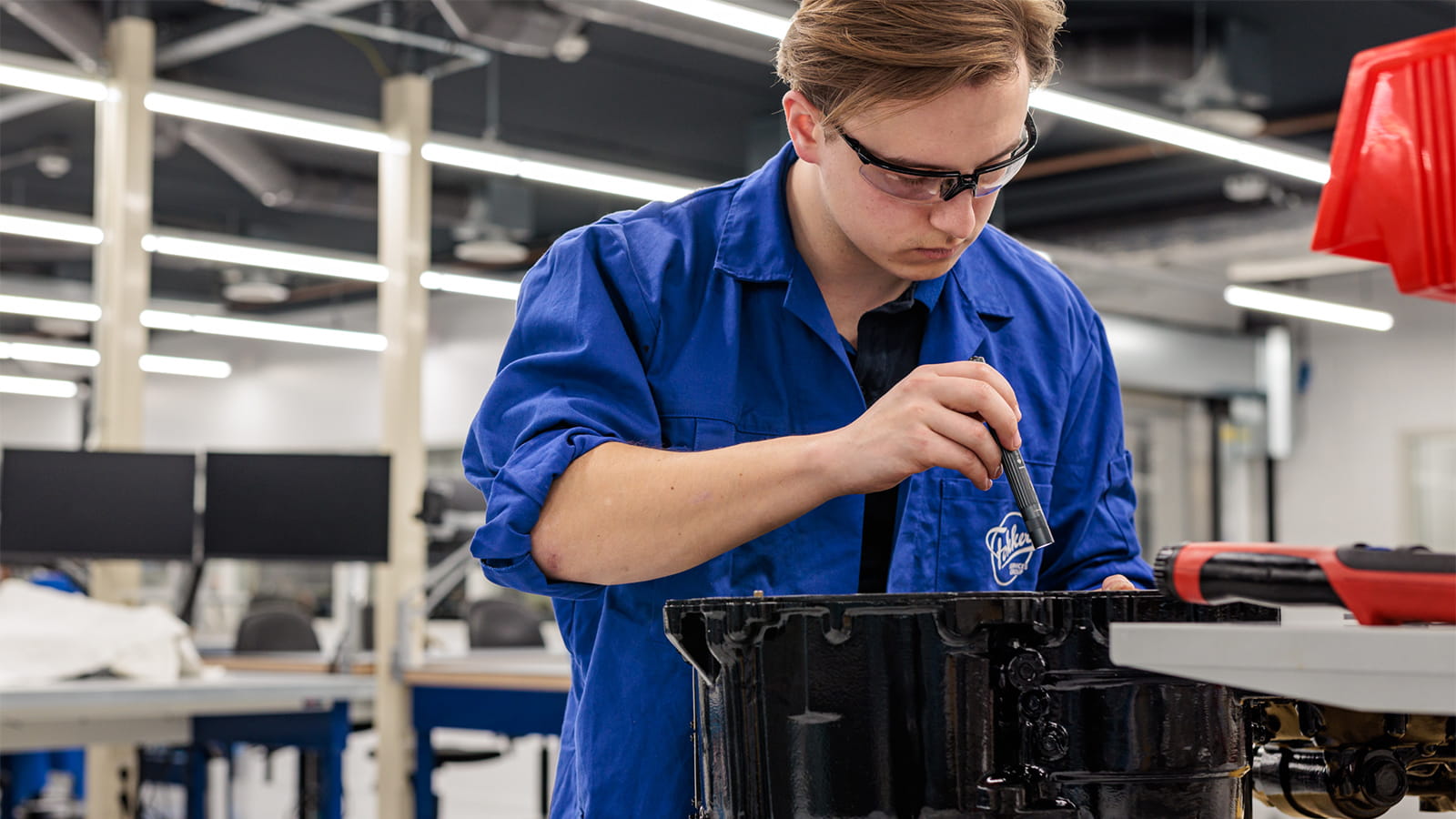The science of military seating: exceeding safety and ergonomic standards a must for the warfighter
If there’s something to know about a seat on a military aircraft, design engineer Shawn Day knows it. He and his team in Colorado Springs work every aspect of the military aircraft seat’s lifecycle.
“Our team does it all,” said the 17-year Collins seating veteran. “We participate in everything from customer listening and engagement, all the way through to design, development and delivery of the final product.
This kind of proximity to the program makes Shawn acutely aware of the challenges created by many older military seats.
Many of the seats flying today on fixed-wing military aircraft were designed decades ago to the standards prevailing at that time and do not include the improvements that come with aligning to current safety and ergonomic standards. Instances of back and neck injury, crew fatigue and diminished troop readiness are the effects of seats designed to these legacy standards. That’s why he ensures Collins’ seats are designed to improve safety, comfort, effectiveness and reliability for the warfighter.
“We’ve all experienced the impact an uncomfortable and one-size-fits-all seat can have on our day,” said Shawn. “You can imagine the critical impact on troops who must be at the top of their game in the field for hours at a time.”
Raising the bar for military crew seats
Many military crew seats designed up to 50 years ago are still flying today. Seating and safety technology has come a long way since then, particularly in the way of crash-testing. Modern engineered seats incorporate capabilities and features which are designed to result in fewer back and neck injuries for aircrews.
In the late ’90s, the U.S. Congress designated funds for Collins and the U.S. Air Force to partner on a program known as Fixed Aircrew Seat Standardization, or FASS, to develop a standard specification for mission crew seating. The program had three main goals: establish seat commonality across aircraft platforms, improve ergonomics and implement more rigorous safety testing – such as placing the seats under realistic aircraft crash distortion stresses while subjecting them to high-speed crash testing to observe how the seats and occupants perform.
Today’s FASS protocols subject seats to actual impact forces as opposed to sub-realistic laboratory-controlled steady-state force tests prescribed by past standards. Essentially, seats now must hold up against the extreme stressors we know exist in actual crash events, a requirement which earlier seat qualification standards did not include.
That wasn’t a problem for Shawn and his team at Collins. They’d been testing to those standards for years. “This program is kind of my baby,” said Shawn.
Collins continued development of select FASS seat family models and went on to complete design of the FASS model 1222 pilot seat and model 1225 operator seats. Multiple variants of the 1225 seat model were eventually awarded positions on the C-130, E-3 and E-6B aircraft. Both seat models are being offered to replace existing seats on the C-130, C-135, C-5 and E-8 aircraft.
Navigating tight budgets
In 2014, the U.S. Air Force revisited the dynamic crash-testing guidance and included it in the Military Handbook (MIL-HDBK-516C), a U.S. Department of Defense publication used to achieve standardization objectives. While inclusion in the handbook was a step forward, implementation of seats adhering to the new standards created another issue: budget constraints can keep military customers from upgrading.
“Budgets are always a challenge,” said Troy Brunk, president of Interiors for Collins Aerospace. “But when customers are presented the compelling data showing the positive difference a highly tested and engineered seat can do for performance, maintainability and most importantly, the safety of the warfighter, they also see the value.”
Troy also points out that maintaining legacy seats, especially those that are decades old, is a costly venture itself. Locating spares takes time, which keeps aircraft grounded, and brings little return on investment. By contrast, new seats require little maintenance, and maintenance and repair can be performed on-wing with common parts and tools. Those factors significantly reduce cost of ownership.
“We’re proud to develop a solution that is both a worthy long-term investment and improves safety, comfort, and reliability in line with and, in some areas beyond current military seating standards,” said Troy. “Our service members deserve our very best, and it’s most rewarding to offer them just that.”
Shawn couldn’t agree more. “It’s great to pour your life into something you believe in. Something that directly impacts the lives of the warfighter. It feels good – almost like I’m part of the effort, part of something bigger than myself.”

